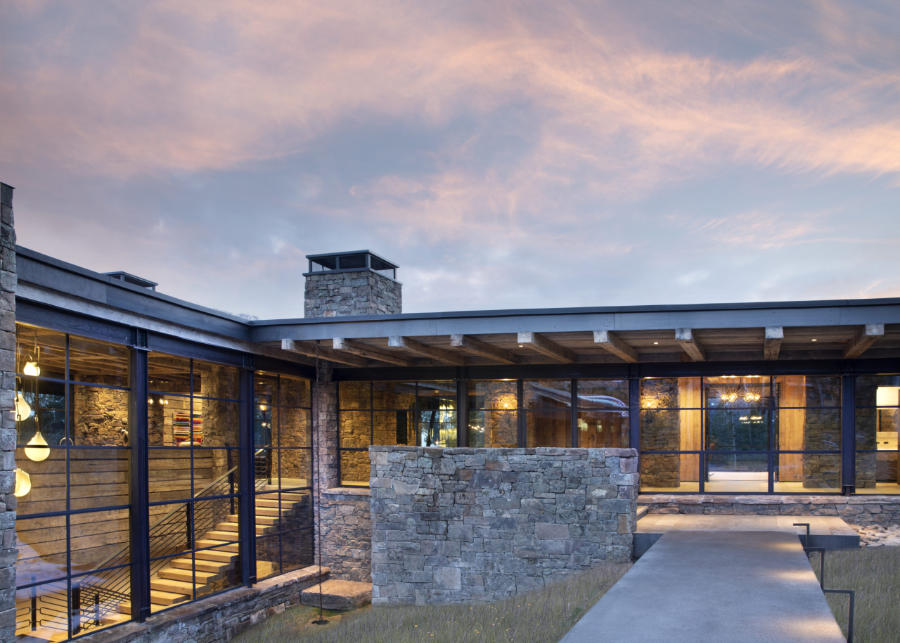Have you ever found yourself at a crossroads, trying to decide between steel windows and uPVC windows for your latest project?
It’s like choosing between a sturdy, timeless classic and a modern, energy-efficient marvel. Both options have their fan base among architects and home builders, but making the right choice isn’t just about personal preference; it’s about understanding the nitty-gritty of what each brings to the table.
In the realm of construction and design, windows aren’t just holes in the wall; they are the soul of a building. They dictate not just the light and air that permeates your space but also play a crucial role in defining the aesthetic appeal and energy efficiency of your projects.
With the window and door market flooded with options, the battle between steel and uPVC stands out due to the stark contrasts in their offerings.
This article aims to shed light on these two popular materials, steel windows vs uPVC windows, focusing on their strengths, weaknesses, and best applications.
Whether you’re restoring a vintage charmer or constructing a sleek, modern edifice, the insights here will help you choose the right materials to align with both your design aspirations and practical needs.
Understanding Steel Windows
Historical Context and Evolution
Steel windows, a testament to industrial prowess, have graced buildings for centuries. Initially, their strength and slim profiles made them a go-to choice for factories and warehouses.
However, their aesthetic appeal soon captured the attention of architects and homeowners alike, making them a staple in both residential and commercial architecture.
Steel’s evolution from purely industrial to a revered residential material showcases its versatility and timeless appeal.

Key Characteristics
Steel windows are celebrated for their strength and durability, unmatched by most other materials. This inherent robustness allows for slim profiles and larger glass panes, offering unobstructed views and flooding spaces with natural light. Beyond their physical attributes, steel windows also have a certain je ne sais quoi, adding a touch of elegance and character to any structure.
Advantages of Steel Windows:
- Strength and Durability: Capable of withstanding extreme weather conditions, from blistering heat to icy cold, without warping or corroding.
- Aesthetic Appeal: Their sleek and minimalistic design can complement a range of architectural styles, from vintage to contemporary.
- Sustainability: Steel is a recyclable material, making steel windows a more environmentally friendly option.
Ideal Applications
Given their robust nature and elegant appearance, steel windows are perfectly suited for both heritage restorations and modern minimalist designs. They are often the material of choice for projects where durability and design flexibility are paramount, seamlessly blending with the architectural ethos of grand villas, trendy lofts, and everything in between.

Exploring uPVC Windows
Introduction to uPVC
Unplasticized Polyvinyl Chloride, or uPVC, is a form of plastic widely accepted in the window and door manufacturing industry. Known for its energy efficiency, low maintenance, and cost-effectiveness, uPVC has become a popular choice among homeowners and builders seeking practical and aesthetically pleasing window solutions.
Key Characteristics
uPVC windows are lauded for their excellent thermal and sound insulation, helping to keep your home warm in the winter and cool in the summer, all while keeping external noise at bay. They also boast impressive low-maintenance qualities, requiring little more than a wipe down to keep them in good condition.
Advantages of uPVC Windows:
- Insulation: uPVC windows offer superior thermal efficiency and sound insulation, making them ideal for energy-conscious projects.
- Maintenance: These windows are low maintenance, resisting common issues like rot, warp, and corrosion.
- Cost-Effectiveness: Generally more affordable than their steel counterparts, uPVC windows provide excellent value for money.
Typical Applications
uPVC windows are a versatile choice, suitable for a wide range of building types. They are particularly popular in residential projects where cost, insulation, and low maintenance are key considerations. Their ability to be customized in various colors and finishes also makes them adaptable to different architectural styles.
Detailed Comparison Between Steel and uPVC Windows
When it comes to choosing between steel windows and uPVC windows, several factors need to be considered. Let’s dive into a detailed comparison to help you make an informed decision.
Durability and Lifespan
| Feature | Steel Windows | uPVC Windows |
|---|---|---|
| Durability | Extremely durable, with a lifespan of several decades. Resistant to corrosion with proper treatment. | Durable with a good lifespan, though generally shorter than steel. Resistant to rot, warp, and corrosion. |
| Maintenance | Requires periodic maintenance to prevent rust and keep them in good condition. | Low maintenance; doesn’t require painting or frequent upkeep. |
Aesthetics and Design Flexibility
Steel windows offer slim profiles and the ability to hold larger glass panes, providing elegant sightlines and a sense of openness. They can be painted in any color, though repainting is necessary over time. uPVC windows, while not as slender as steel, offer a range of finishes and colors, and newer technologies have improved their aesthetic versatility without the need for repainting.
Thermal Efficiency and Insulation
uPVC windows are known for their superior insulation capabilities, helping to keep your home warm in winter and cool in summer. Steel, while not inherently insulating, can be equipped with thermal breaks to enhance energy efficiency.
Environmental Impact
Steel windows, made from a recyclable material, have a lower environmental impact over their lifecycle. uPVC, while also recyclable, is a petroleum-based product, which poses greater challenges in terms of environmental sustainability.
Making the Right Choice for Your Project
When it comes down to choosing the right windows for your project, the decision between steel windows and uPVC windows can significantly impact both the aesthetics and functionality of the building. Here’s how to navigate this choice, considering the unique needs of your project.
Project Budget
Budgeting is often the elephant in the room, but it’s a crucial factor. Steel windows, with their durability and aesthetic appeal, tend to be on the higher end of the cost spectrum.
In contrast, uPVC windows offer considerable cost savings, both upfront and in terms of low maintenance requirements.
Deciding how much of your budget you can allocate to windows will significantly narrow down your options.
Architectural Style
The architectural style of your project plays a pivotal role in your material choice.
Steel windows lend themselves to both traditional and modern designs, thanks to their slim profiles and elegant sightlines. Whether you’re restoring a historic property or designing a contemporary masterpiece, steel can complement your vision.
uPVC windows, while versatile, are particularly suited to modern residential projects where energy efficiency and sound insulation are key.
Performance Requirements
Consider what you need most from your windows. Is thermal efficiency a priority to keep energy costs low?
uPVC windows excel in insulating homes from the outside elements. Or perhaps strength and longevity are paramount, for which steel is unmatched. Assessing the performance requirements of your project will guide you to the material that aligns with your priorities..
Conclusion
Deciding between steel windows and uPVC windows is more than a matter of preference; it’s a decision that affects the lifespan, functionality, and aesthetic of your building.
While steel offers unparalleled strength, durability, and sleek design, uPVC stands out for its insulation, cost-effectiveness, and low maintenance.
The right choice balances these factors with your project’s specific needs, budget, and style.
Remember, every detail counts in architecture. The windows you choose will not only influence the look and feel of your building but also its comfort and efficiency.
Whether you’re drawn to the timeless elegance of steel or the practical benefits of uPVC, ensure that your choice reflects both your project’s aesthetic goals and functional requirements.
FAQ
Q: What are the main differences between steel windows and uPVC windows?
A: Steel windows are known for their durability and strength, while uPVC windows offer better insulation and require less maintenance.
Q: Which is more suitable for modern homes, steel windows or uPVC windows?
A: Steel windows are often preferred for modern homes due to their sleek design, energy efficiency, and low maintenance requirements.
Q: Are steel windows more expensive than uPVC windows?
A: Yes, steel windows are generally more expensive than uPVC windows due to the cost of materials and the manufacturing process.
Q: What are the benefits of using uPVC windows in a residential construction project?
A: uPVC windows offer excellent thermal efficiency, noise reduction, and durability, making them a popular choice for residential buildings.
Q: Can I replace my old wooden windows with uPVC windows?
A: Yes, uPVC windows are commonly used as replacements for old wooden windows due to their low maintenance and long-lasting properties.
Q: How do steel window frames compare to aluminium window frames?
A: Steel window frames are more durable and stronger than aluminium frames, but aluminium frames offer better thermal insulation.
Q: What should architects consider when choosing between steel windows and uPVC windows for a project?
A: Architects should consider factors such as the building’s design aesthetics, energy efficiency requirements, and budget constraints when selecting between steel and uPVC windows.



